My application is receive a json string. I want to be able to display this string in a nice formatted way. Truly I do not even know what question to ask and that is the source of my problem.
Here is an example of the String that I am receiving:
[{"sentence" : "Goldman Dukes is testing to see whether our request functionality works for the upcoming sprint.","sentenceNbr" : "1","tokens" : ["Goldman", "Dukes", "is", "testing", "to", "see", "whether", "our", "request", "functionality", "works", "for", "the", "upcoming", "sprint", "."],"pos" : ["NNP", "NNP", "VBZ", "VBG", "TO", "VB", "IN", "PRP$", "NN", "NN", "VBZ", "IN", "DT", "VBG", "NN", "."],"ner" : ["PERSON", "PERSON", "O", "O", "O", "O", "O", "O", "O", "O", "O", "O", "O", "O", "O", "O"],"lemmas" : ["Goldman", "Dukes", "be", "test", "to", "see", "whether", "we", "request", "functionality", "work", "for", "the", "upcome", "sprint", "."]},{"sentence" : "Nick Wills is a great guy.","sentenceNbr" : "2","tokens" : ["Nick", "Wills", "is", "a", "great", "guy", "."],"pos" : ["NNP", "NNP", "VBZ", "DT", "JJ", "NN", "."],"ner" : ["PERSON", "PERSON", "O", "O", "O", "O", "O"],"lemmas" : ["Nick", "Wills", "be", "a", "great", "guy", "."]},{"sentence" : "He lives in Northern Virginia.","sentenceNbr" : "3","tokens" : ["He", "lives", "in", "Northern", "Virginia", "."],"pos" : ["PRP", "VBZ", "IN", "NNP", "NNP", "."],"ner" : ["O", "O", "O", "LOCATION", "STATE_OR_PROVINCE", "O"],"lemmas" : ["he", "live", "in", "Northern", "Virginia", "."]}]
I receive the strings exactly as above, with no whitespace or other formatting aids. Here's a slightly easier-to-read version:
[
{
"sentence" : "Goldman Dukes is testing to see whether our request functionality works for the upcoming sprint.",
"sentenceNbr" : "1",
"tokens" : ["Goldman", "Dukes", "is", "testing", "to", "see", "whether", "our", "request", "functionality", "works", "for", "the", "upcoming", "sprint", "."],
"pos" : ["NNP", "NNP", "VBZ", "VBG", "TO", "VB", "IN", "PRP$", "NN", "NN", "VBZ", "IN", "DT", "VBG", "NN", "."],
"ner" : ["PERSON", "PERSON", "O", "O", "O", "O", "O", "O", "O", "O", "O", "O", "O", "O", "O", "O"],
"lemmas" : ["Goldman", "Dukes", "be", "test", "to", "see", "whether", "we", "request", "functionality", "work", "for", "the", "upcome", "sprint", "."]
},
{
"sentence" : "Nick Wills is a great guy.",
"sentenceNbr" : "2",
"tokens" : ["Nick", "Wills", "is", "a", "great", "guy", "."],
"pos" : ["NNP", "NNP", "VBZ", "DT", "JJ", "NN", "."],
"ner" : ["PERSON", "PERSON", "O", "O", "O", "O", "O"],
"lemmas" : ["Nick", "Wills", "be", "a", "great", "guy", "."]
},
{
"sentence" : "He lives in Northern Virginia.",
"sentenceNbr" : "3",
"tokens" : ["He", "lives", "in", "Northern", "Virginia", "."],
"pos" : ["PRP", "VBZ", "IN", "NNP", "NNP", "."],
"ner" : ["O", "O", "O", "LOCATION", "STATE_OR_PROVINCE", "O"],
"lemmas" : ["he", "live", "in", "Northern", "Virginia", "."]
}
]
My end goal is to display this data in a gridview type of format, but for now I would be satisfied with just figuring out how to display this in a "pretty" way, as above.
I am very familiar with using C# but have no experience with JSON. Any help would be appreciated


